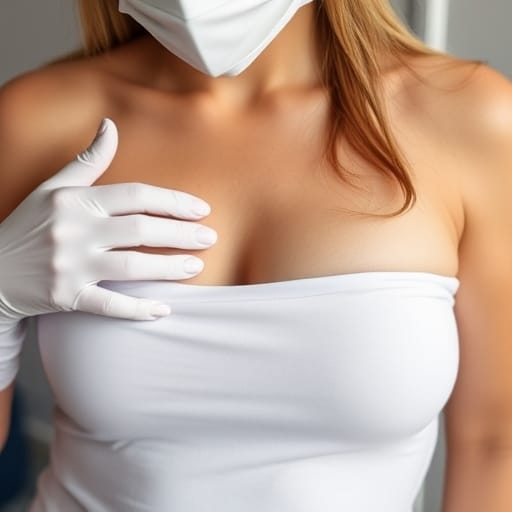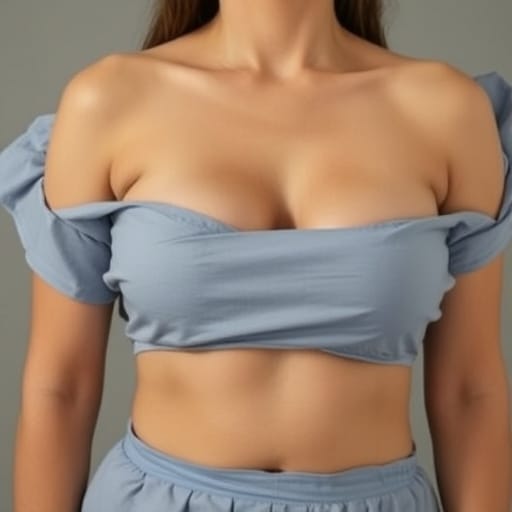Dermal Fillers

Dermal fillers are non-surgical cosmetic treatments designed to enhance facial features, restore lost volume, and reduce the appearance of wrinkles and fine lines. They are typically injected into specific areas of the face or hands to achieve a youthful and rejuvenated appearance.
Types of Dermal Fillers
- Hyaluronic Acid (HA) Fillers
- Most popular type, naturally found in the body.
- Common brands: Juvederm, Restylane.
- Used for lips, cheeks, under-eyes, and smoothing lines.
- Calcium Hydroxylapatite (CaHA) Fillers
- Found in bones, heavier texture than HA fillers.
- Common brand: Radiesse.
- Ideal for deeper wrinkles and facial contouring.
- Poly-L-Lactic Acid Fillers
- Stimulates collagen production over time.
- Common brand: Sculptra.
- Used for significant volume loss and deeper lines.
- Polymethylmethacrylate (PMMA) Fillers
- Contains tiny beads and collagen to provide long-term volume.
- Common brand: Bellafill.
- Suitable for acne scars and deep wrinkles.
- Fat Transfer
- Uses your body’s fat (from liposuction) as a natural filler.
- Provides a more permanent solution.
Common Treatment Areas
- Lips: Enhance volume and shape.
- Cheeks: Add volume and lift.
- Nasolabial folds: Smooth lines from the nose to the mouth.
- Under-eye hollows: Address dark circles and volume loss.
- Jawline and chin: Improve contour and symmetry.
- Hands: Restore lost volume and reduce visible veins.
Procedure Overview
- Consultation: Discuss goals, filler types, and medical history with a provider.
- Preparation: The area is cleaned, and a numbing agent may be applied.
- Injection: Filler is injected with fine needles or cannulas, followed by gentle molding.
- Recovery: Minimal downtime, with mild swelling or bruising possible.
Benefits
- Non-surgical with quick results.
- Temporary effects allow for adjustments as preferences change.
- Versatile applications across various areas.
Risks and Considerations
- Minor swelling, bruising, or redness.
- Rare complications like lumps, infections, or vascular occlusion.
- Results typically last 6 months to 2 years, depending on the filler type.
1. Hyaluronic Acid (HA) Fillers
- What it is: HA is a natural substance found in the skin that retains moisture and provides plumpness. HA fillers mimic this natural component.
- Common Brands:
- Juvederm: Includes variants like Juvederm Ultra, Voluma, and Vollure.
- Restylane: Offers products like Restylane-L, Lyft, and Silk.
- Best For:
- Enhancing lips and cheeks.
- Smoothing fine lines (e.g., around the mouth).
- Filling under-eye hollows.
- Longevity: 6-18 months, depending on the product.
- Advantages:
- Results are reversible with hyaluronidase enzyme.
- Natural-looking enhancement.
2. Calcium Hydroxylapatite (CaHA) Fillers
- What it is: A mineral-like compound found in bones, providing structure and firmness.
- Common Brand: Radiesse.
- Best For:
- Deeper wrinkles (e.g., nasolabial folds).
- Jawline contouring.
- Hand rejuvenation.
- Longevity: 12-18 months.
- Advantages:
- Stimulates collagen production.
- Provides immediate results with longer-term improvements.
3. Poly-L-Lactic Acid Fillers
- What it is: A synthetic material that stimulates collagen production over time for gradual improvement.
- Common Brand: Sculptra Aesthetic.
- Best For:
- Restoring significant facial volume (e.g., cheeks and temples).
- Deep folds and wrinkles.
- Long-term improvements rather than instant results.
- Longevity: Up to 2 years, as it encourages your body to rebuild collagen.
- Advantages:
- Long-lasting results.
- Gradual, natural enhancements.
4. Polymethylmethacrylate (PMMA) Fillers
- What it is: A biocompatible synthetic substance mixed with collagen that provides semi-permanent results.
- Common Brand: Bellafill.
- Best For:
- Deep wrinkles and folds.
- Acne scar treatment.
- Longevity: 5 years or more.
- Advantages:
- Long-term solution with minimal maintenance.
- Suitable for those seeking a more permanent option.
5. Fat Transfer (Autologous Fat Injections)
- What it is: Fat is harvested from your body (via liposuction) and re-injected to add volume.
- Best For:
- Long-lasting volume in cheeks, lips, or hands.
- Addressing facial fat loss due to aging or weight changes.
- Longevity: Permanent, though some fat may be reabsorbed over time.
- Advantages:
- Completely natural option with no synthetic materials.
- Dual benefit of fat removal from unwanted areas.
How to Choose the Right Filler
Consider:
- Treatment Goals: Temporary vs. long-lasting results.
- Treatment Area: HA fillers for lips vs. Sculptra for volume loss.
- Budget: HA fillers are more affordable for short-term use.
- Desired Look: Gradual improvement vs. immediate results.
Let’s compare dermal fillers based on specific areas or concerns. Please select the treatment area or goal you’re interested in:
Common Areas:
- Lips – For plumping or reshaping.
- Cheeks – For volume and lifting.
- Under-Eyes – To reduce hollows or dark circles.
- Jawline & Chin – For contouring and definition.
- Nasolabial Folds – To soften deep lines around the nose and mouth.
- Hands – For rejuvenation and volume loss.
- Acne Scars – For smoothing and filling.
Let’s break it down by treatment area and the most suitable fillers:
1. Lips
Goal: Plumping, reshaping, or subtle hydration for a more youthful appearance.
- Best Filler Types:
- Hyaluronic Acid (HA) Fillers: Juvederm Ultra XC, Restylane Kysse, or Restylane Silk.
- Ideal for adding volume, smoothing fine lines, and enhancing natural contours.
- Longevity: 6-12 months.
- Key Benefits:
- Soft texture for natural results.
- Reversible with hyaluronidase.
2. Cheeks
Goal: Restoring volume, contouring, or lifting sagging skin.
- Best Filler Types:
- Hyaluronic Acid (HA) Fillers: Juvederm Voluma or Restylane Lyft.
- Calcium Hydroxylapatite (CaHA): Radiesse for longer-lasting results.
- Poly-L-Lactic Acid: Sculptra for gradual collagen rebuilding.
- Longevity:
- HA Fillers: Up to 2 years.
- CaHA: 12-18 months.
- Sculptra: Up to 2 years.
- Key Benefits:
- Immediate lift with HA and CaHA.
- Long-term collagen boost with Sculptra.
3. Under-Eyes
Goal: Reducing hollows, dark circles, or tired appearance.
- Best Filler Types:
- Hyaluronic Acid (HA) Fillers: Restylane or Belotero Balance.
- Longevity: 6-12 months.
- Key Benefits:
- Smooth and lightweight for the delicate under-eye area.
- Reversible if adjustments are needed.
4. Jawline & Chin
Goal: Enhancing definition, addressing asymmetry, or creating a stronger profile.
- Best Filler Types:
- Hyaluronic Acid (HA) Fillers: Juvederm Volux or Restylane Defyne (specifically designed for structural support).
- Calcium Hydroxylapatite (CaHA): Radiesse for firmer contouring.
- Longevity: 12-24 months.
- Key Benefits:
- HA fillers provide immediate contouring.
- CaHA offers a firm and long-lasting structure.
5. Nasolabial Folds
Goal: Softening deep lines from the nose to the mouth.
- Best Filler Types:
- Hyaluronic Acid (HA) Fillers: Juvederm Vollure or Restylane Refyne.
- Polymethylmethacrylate (PMMA): Bellafill for a semi-permanent solution.
- Longevity:
- HA Fillers: 12-18 months.
- PMMA: 5+ years.
- Key Benefits:
- HA fillers provide natural flexibility for dynamic areas.
- PMMA offers a long-term fix for deep lines.
6. Hands
Goal: Restoring volume, reducing visible veins, and improving skin texture.
- Best Filler Types:
- Calcium Hydroxylapatite (CaHA): Radiesse.
- Fat Transfer: For a natural, permanent option.
- Longevity:
- CaHA: 12-18 months.
- Fat Transfer: Permanent.
- Key Benefits:
- Radiesse improves texture and stimulates collagen.
- Fat transfer uses your natural fat for rejuvenation.
7. Acne Scars
Goal: Filling pitted scars and smoothing skin texture.
- Best Filler Types:
- Hyaluronic Acid (HA) Fillers: Restylane or Juvederm for shallow scars.
- Polymethylmethacrylate (PMMA): Bellafill for permanent correction.
- Longevity:
- HA Fillers: 6-12 months.
- PMMA: 5+ years.
- Key Benefits:
- HA fillers provide immediate improvement.
- Bellafill offers a long-lasting solution for deeper scars.



